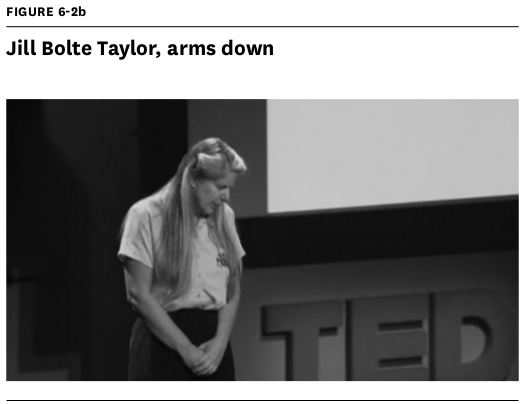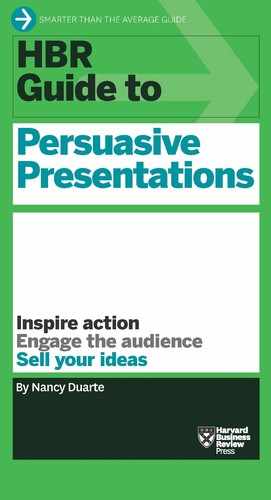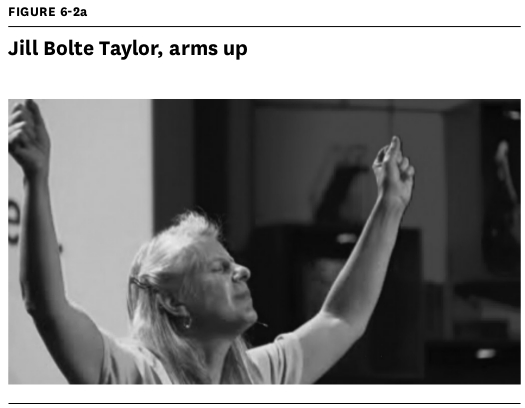Communicate with Your Body
People will read your body language to decide if they can trust you and your expertise. Constricted and contrived gestures will make you seem insecure. Larger movement conveys confidence and openness.
Use your physical expression to its fullest with the following techniques:
- Project emotion with your face: Connect with the audience by using your face to convey your feelings. Smile, laugh, open your mouth in disbelief. Before you begin your talk, try moving every facial muscle you can—it’ll help you warm up.
- Peel yourself away from your slides: If you turn your back to the audience to look at your slides, you put up a barrier. As much as you can, keep your eyes on the people who have come to hear you.
- Open up your posture: Avoid a “closed” stance, such as folding your arms, standing with legs crossed, putting your hands in your pockets, or clasping your hands behind or in front of you. It signals discomfort.
- Exaggerate your movements: Fill the space around you, especially if you’re speaking in a large room. Use the same types of gestures you would if you were having a personal conversation—but make them bigger and more deliberate. Before your presentation, stretch your arms as wide as you can and as tall as you can (even stand on your toes). This helps you open up your chest cavity and practice exaggerating your gestures.
- Match gestures with content: Gestures should complement or amplify what you’re saying. If you’re presenting a record year in sales, go “big” with your arms and your smile. If your team barely missed its targets, bring everything in, perhaps showing a tiny little gap between your thumb and forefinger.
Brain scientist Jill Bolte Taylor coordinated her gestures and content beautifully when she described in her 2008 TED talk what it was like to have a massive stroke. She threw her arms upward to convey the unexpected rush of euphoria she’d felt as the left side of her brain shut down (figure 6-2a); she brought them back down when she described how she’d surrendered her spirit, ready to transition out of this world (figure 6-2b).
When you tape yourself in rehearsal, you may identify gestures, movements, or facial expressions that look lackluster or unnatural. Re-create those gestures so you can physically feel them, and then practice new ones that would be appropriate replacements. As with golf, focus on how it feels as you do it so you can create “muscle memory” of what works.


